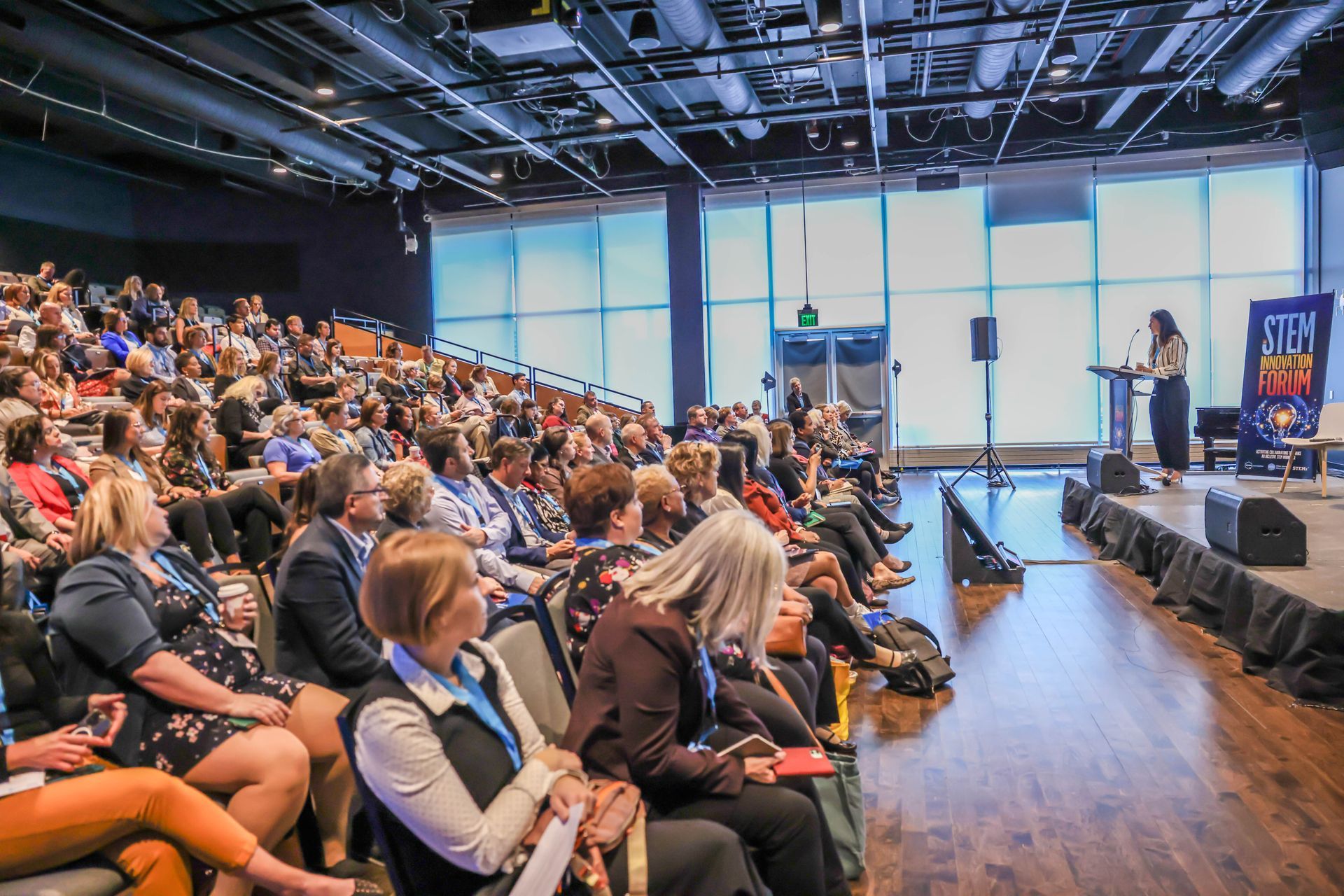Smithsonian center puts experiential learning to the test
At STEMxchange 2016, Dr. Carol O’Donnell briefed attendees on a five-year validation study by the Smithsonian Science Education Center.
“We believe in lifelong learning, experiential learning. In 1985, the Smithsonian and the National Academy of Science got together and decided that they wanted to create an institution that would bring that kind of experiential learning into classrooms everywhere. Now, in 1985, that seemed really novel.”
“Today, it doesn’t.” The idea of experiential learning isn’t so novel anymore. However, O’Donnell and her partners have conducted a deep study into the impacts of this idea. That’s a huge contribution to the education field.
The Smithsonian Science Education Center was awarded a US Department of Education i3 grant to evaluate the effects of their Leadership and Assistance for Science Education Reform (LASER) Model. This model is an inquiry-based approach to science education that provides students in classrooms across the country and world with captivating, first-hand learning experiences. They recently completed the study, yielding promising results for their approach.
The LASER Model consists of five elements. O’Donnell went into detail: “First, Research-Based Curriculum. We believe it should be inquiry-centered and experiential. Second, competent teachers who go through professional development. Third, some form of assessment that is aligned. Fourth, resource support for materials. People need stuff if they’re going to learn in experiential ways, or if they are going to create phenomenon in classrooms. And most importantly, school and community support. You have to have business partners, institutes of higher education, philanthropists in the region. That’s actually where we start our work.”
“First, Research-Based Curriculum. We believe it should be inquiry-centered and experiential. Second, competent teachers who go through professional development. Third, some form of assessment that is aligned. Fourth, resource support for materials. People need stuff if they’re going to learn in experiential ways, or if they are going to create phenomenon in classrooms. And most importantly, school and community support. You have to have business partners, institutes of higher education, philanthropists in the region. That’s actually where we start our work.”
O’Donnell stressed that regardless of their theory of action, the work will fall flat without adjusting it for each unique situation.
“I don’t care what about the infrastructure I have in front of you. If I don’t understand what your local context is, what you believe in your state is your vision for instructional improvement, we can’t do this work.”
Student materials and professional development all focused on inquiry-based learning, well rooted in research. When teaching through inquiry, teachers act more as a facilitator or coach than an instructor, guiding an activity alongside their own students. Students are encouraged to ask questions and engaged with each other, discovering knowledge instead of receiving it directly from the teacher.
The inquiry process encourages carrying out investigations and grappling with data to generate conclusions. Inquiry in action aligns closely with the scientific method, and is intuitively implemented in the science classroom. Listen to one participant talk about inquiry-based learning here.

A North Carolina LASER teacher examines convection tubes at professional development training in the STC unit Understanding Weather and Climate.
LASER teachers received a Science and Technology Concepts unit produced by the SSEC as well as high-quality, differentiated professional development. This combination helped teachers implement new pedagogical strategies through engaging science lessons, fully resourced by the LASER program.
After three years of implementation, Dr. O’Donnell and her colleagues had the data they needed to evaluate the program’s effect on student outcomes.
In other words, did the work actually work?
That’s what the Smithsonian had to prove through regimented implementation and rigorous evaluation by a third party. Their research question?
“After three years of participation in the study, do students who receive those components of LASER have higher student achievement in science than schools who don’t?”
“We worked with 125 schools, 16 districts, across three states…. We followed a subsample of 9,000 students longitudinally over three of those five years, pretesting them at the beginning and post testing them in the spring of 2014, and in between along the way.”
“Schools were demographically paired and then were randomly assigned, either to receive all the components of LASER, or to get nothing, to do their business as usual for five whole years, with the promise that if they stuck with us that we would give them the professional development and all the student materials in the fifth year.”
What did the study show? Were the results as anticipated?
“Surveys showed that teachers felt more prepared to teach inquiry. Classroom observations showed students were demonstrating more collaboration, working in teams, solving problems. Students were applying what they had learned to real world situations.”
“Underserved students scored higher on the science performance task compared to underserved students in the non-LASER schools.”
“The interdisciplinary approach to teaching science, the integration of math and reading into science, led also into higher schools on the math state tests and the reading state tests.”
“We believe this kind of learning actually promotes not only interactive critical thinking, but also specifically doing science, for especially those who were economically disadvantaged, English learners, females, and those students who have disabilities. Those were the subgroups that seemed to have the greatest impact.”
She had three pieces of advice for partners interested in doing similar evaluation studies.
“One, you need some type of infrastructure or coordination in your state in place – that’s that collective impact model. Two, you need to have access to reliable funding. For us, for five years, that was the I3. Third, you need to put some kind of evaluation in place to make sure that what you’re doing is working.”
Dr. O’Donnell’s team was awarded an i3 extension grant to continue their research, this time evaluating the effects of LASER after the active intervention is removed.
In her words, “it’s allowing us to study what happens when you take the money away… We are stepping away from the system, and all that the evaluator is doing is assessing sustainability.”
With rigorous research from the Smithsonian Science Education Center, STEM education will benefit from a proven theory of action, expanding the toolkit of school improvement to include another vetted approach.
For a deeper dive into the study’s outcomes take a look at the Smithsonian’s Executive Summary.
Has your organization been involved in grant-funded studies like this one? Let us know! Email STEMx to help us spread the word on the research.




